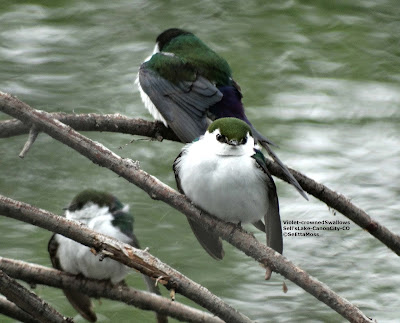The world is a dangerous place for nestling birds
A recently published study in The Condor--'Influence of condition and habitat use on survival of post-fledgling songbirds' found that life after fledging for Overbirds and Worm-eating Warblers is fraught with perils, especially the predator king. Between 2004 and 2007 they radio-tagged just over a hundred fledglings of these species in Ohio. Their calculations indicated that "post-fledging survival to be 65% for Overbirds (51 days after fledging) and 67% for Worm-eating Warblers (31 days after fledging)." They also found that those fledglings that spent the most time in dense growth had the highest survival percentage which highlights the importance of providing high quality habitat to birds after they fledge as well as other times in their life cycle.
There is previous research on other bird species showing similar issues. A 1967 article "POSTFLEDGING SURVIVAL AND MOVEMENT IN DICKCISSELS (SPIZA AMERICANA): IMPLICATIONS FOR HABITAT MANAGEMENT AND CONSERVATION"
, also published in The Condor found the following: "Mortality rates were highest during the first week aft er leaving the nest, and only 33% of the fledglings survived the first four weeks aft er leaving the nest." Again habitat quality was a factor: "fledgling survival was positively associated with dense vertical and horizontal structure of forbs at nests." SeEtta
There is previous research on other bird species showing similar issues. A 1967 article "POSTFLEDGING SURVIVAL AND MOVEMENT IN DICKCISSELS (SPIZA AMERICANA): IMPLICATIONS FOR HABITAT MANAGEMENT AND CONSERVATION"
, also published in The Condor found the following: "Mortality rates were highest during the first week aft er leaving the nest, and only 33% of the fledglings survived the first four weeks aft er leaving the nest." Again habitat quality was a factor: "fledgling survival was positively associated with dense vertical and horizontal structure of forbs at nests." SeEtta


Comments